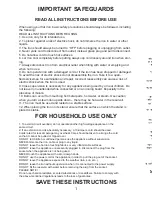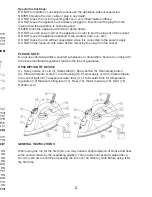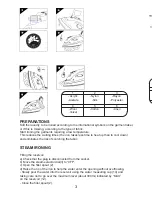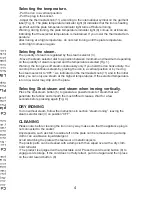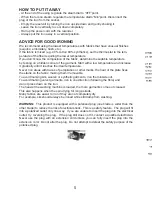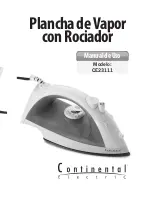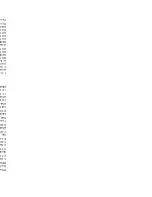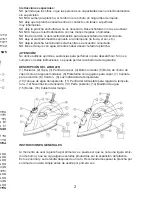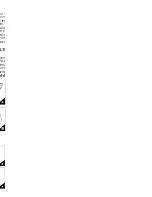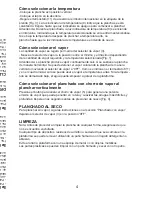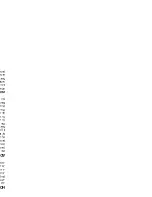
Fig.1
Fig.2
Fig.3
Fig.4
Fig.5
Fig.6
Fig.7
St
ea
m
Ste
am
Fig.1
Fig.2
Fig.3
Fig.4
Fig.5
Fig.6
Fig.7
Ste
am
St
ea
m
PREPARA
TIONS
Soft the laundry to be ironed according to the international symbols on the garment label,
or if this is missing, according to the type of fabric.
Start ironing the garments requiring a low temperature.
This reduces the waiting times (the iron takes less time to heat up than to cool down)
and eliminates the risk of scorching the fabric.
STEAM IRONING
Filling the reservoir
a) Check that the plug is disconnected from the socket.
b) Move the steam selector dial(3) to “0FF”.
c) Open the filler spout (2).
d) Raise the tip of the iron to help the water enter the opening without overflowing.
- Slowly pour the water into the reservoir using the water measuring cup (14) and
taking care not to go over the maximum level (about 300ml) indicated by “MAX”
on the reservoir (12).
- Close the filler spout (2).
PREPARACIÓN
Separe la ropa que se va a planchar de acuerdo a los símbolos internacionales que
vienen en las etiquetas de las prendas, o en su defecto, de acuerdo al tipo de tela.
Comience a planchar las prendas que requieran de temperatura baja.
Esto reduce el tiempo de espera (la plancha tomas menos tiempo para calentarse
que para enfriarse) y elimina el riesgo de quemar la tela.
PLANCHADO A VAPOR
Cómo llenar el tanque de agua
-Verifique que el tapón no se encuentre en la abertura del alimentador.
-Mueva el selector de vapor (3) a “OFF” [Fig. 1].
-Abra la tapa (2)
-Levante la punta de la plancha para ayudar a que el agua ingrese por la abertura sin
que se reblase.
-Lentamente vierta el agua dentro del tanque utilizando el medidor especial (14) y
cuidando de no sobrepasar el nivel máximo (unos 300mm) que se indica con la marca
“MAX” en el tanque [Fig. 2]
-Cierre la tapa.
1
- Acrylic
-Acetate
2
-Nylon
-Silk
3
-Rayon
-Polyester
4
-Wool
-V
elvet
5
-Cotton
6
-Linen
1
-
Acrílico
-Acetato
2
-Nilón
-Seda
3
-Rayón
-Poliester
4
-Lana
-Terciopelo
5
-Algodón
6
-Lino
3
3


